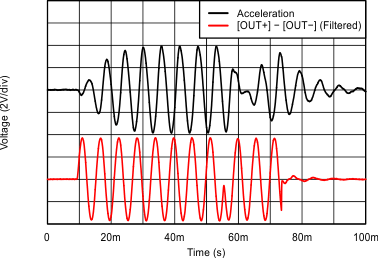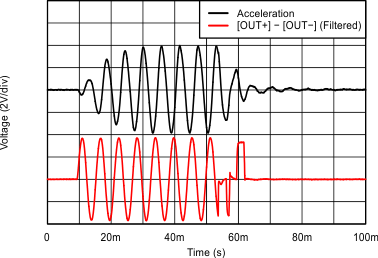SLOU432B December 2015 – December 2021 DRV2625
2.2.3 Automatic Braking in Open Loop
The DRV2625 offers automatic braking in open-loop operation for both ERM and LRA. See Figure 2-7 and Figure 2-8 below for two separate LRA waveforms that show the advantage of using closed-loop breaking out of open loop operation. Notice that the settling time of the waveform with automatic braking is 15 ms, significantly faster than the 40-ms time achieved without automatic braking enabled.
 Figure 2-7 LRA Closed-Loop Click Waveform
Figure 2-7 LRA Closed-Loop Click Waveform Figure 2-8 LRA Open-Loop Click Waveform
Figure 2-8 LRA Open-Loop Click Waveform